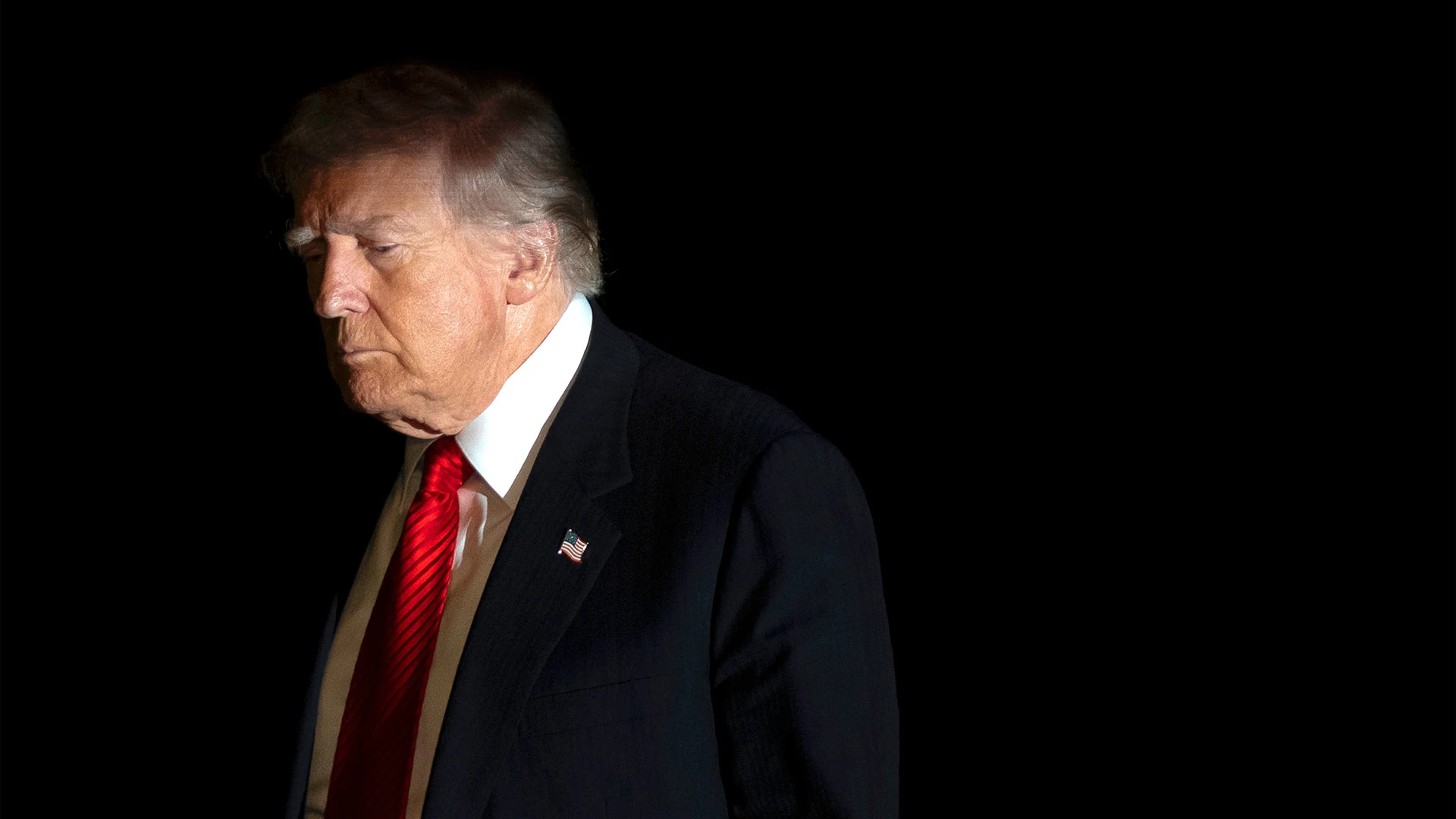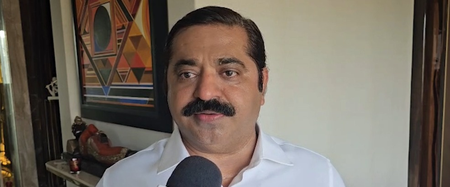Copyright HuffPost

LOADINGERROR LOADING Since President Donald Trump entered office for the second time earlier this year, Democratic politicians and pundits have loved to suggest the party’s ideological divides have become secondary to a split between those in the party who want to battle Trump’s authoritarian impulses and those who want to continue practicing politics as usual. But convincing rank-and-file Democrats ideology isn’t correlated to a willingness to fight Trump will get harder after Sunday night, when a trio of Senate moderates seemingly negotiated ending the ongoing government shutdown without Democrats achieving any of their stated policy goals and at a moment where the party seemed to have a clear political advantage. Advertisement The deal was negotiated by three moderates — Sen. Angus King (I-Maine) and Sens. Maggie Hassan and Jeanne Shaheen, both Democrats from New Hampshire — and was backed in the Senate by five other moderates. (You can quibble if Sen. Tim Kaine of Virginia is a moderate, but the others proudly wear the label.) There’s a very good chance Democratic primary voters pick up one message from the end of the shutdown showdown: Moderates simply will not go to the mat to fight Trump in the way progressives will. If that’s the case, the senators who caved on the shutdown deal are sending other moderates into a crucial year of primary elections with one hand tied behind their backs and voters eyeing more progressive candidates. (Candidates closely affiliated with Senate Minority Leader Chuck Schumer of New York, who is bearing much of the blame for the deal despite voting against it, could face similar skepticism.) “It’s tough to tell voters a moderate candidate can fight back when they see moderates in the Senate folding.” Advertisement “The worst part of this deal in the long-term is it could help candidates who can’t win a general election win a primary,” said one Democratic strategist focused on House races who requested anonymity to speak frankly. “It’s tough to tell voters a moderate candidate can fight back when they see moderates in the Senate folding.” Other centrist party strategists think voters will be smart enough to see most House and Senate moderates opposing the deal and realize the agreement was cut by a small rump of senators. But they emphasize the need for those candidates to show an ability to do battle with the GOP. “There is a caricature of moderates that they can be squishy, and there is a caricature of progressives that they can be wooly-headed, and the most successful of each cut against those stereotypes,” said Jim Kessler, the vice president for policy at Third Way, a centrist group that opposed the deal. “You’ve got to play against a stereotype that isn’t entirely fair, but isn’t made up of whole cloth, to be able to excite the imagination of Democratic-leaning voters.” Advertisement The end of the shutdown is not here yet — the Senate still needs to take an official vote, with the House then expected to vote sometime in the middle of this week — but some of the political consequences are apparent. Here are four other takeaways from the longest government shutdown in American history: This Wasn’t About The Filibuster Some post-shutdown takes have centered on moderates’ desire to protect the filibuster as a major driving force for the deal. Once Trump demanded the GOP go “nuclear” to eliminate the Senate’s 60-vote requirement, the thought goes, moderate senators in both parties decided to cut a deal to protect their senatorial privileges. To be blunt, this idea does not make sense. Moderate Senate Democrats had begun earnest negotiations with the GOP and were pushing for a deal even before the 2025 elections — see Vermont Sen. Bernie Sanders’ op-ed warning about a fold, issued two days before Election Day — and thus well before Trump’s threats against the filibuster, which were issued following the Democratic Party’s romp in Virginia, New Jersey and various other states last week. Advertisement Furthermore, while Trump’s encouragement had moved a few GOP senators toward eliminating the 60-vote requirement, Senate Majority Leader John Thune (S.D.) was holding the line and Republicans were not anywhere close to having the votes necessary. Instead, it appears the Democrats who voted for the deal were sincerely concerned with the damage the shutdown was doing to the country, particularly as airline delays mounted and Trump threatened SNAP benefits, while also thinking the party was making no progress toward convincing the GOP to extend Obamacare subsidies. Advertisement A Successful Attention Economy Ploy Democrats did achieve one of their major political objectives: placing health care at the center of American politics again. It’s an issue where they’ve maintained a distinct advantage over the GOP throughout the Trump era. Both Democratic and Republican strategists have said the GOP is playing with fire if they fail to extend expiring Obamacare subsidies. Polls from Navigator, a Democratic group, have consistently found voters believed the government shutdown fight was about health care rather than immigration, as Republicans initially tried and failed to insist. Republicans, at the very least, have committed to holding some sort of vote on extending Obamacare subsidies in the near future, which will keep the topic in the news. It’s a rare example of Democrats successfully wrestling control of the news cycle away from the former reality TV star in the White House. “For 40 days, we controlled the debate for the first time ever while Donald Trump was president, and we made it about health care and people’s costs,” Kessler said. “It was definitely a factor in our victories last Tuesday.” Advertisement Will Anyone Remember This In November 2026? Probably not. All of the other government shutdowns in the 21st century did not meaningfully impact the general elections that followed. The GOP shutdown in 2013 caused Democrats to open up a massive lead on the generic ballot in polling, but that advantage completely disappeared the next month when the rollout of Obamacare.gov famously went awry. Polling this time consistently showed Republicans receiving most of the blame for the shutdown. As the shutdown wore on, Trump’s approval rating began to sink as he threatened food stamp programs, tore down the White House’s East Wing and threw a gaudy Halloween party at Mar-a-Lago. It’s now at the lowest it has been during his second term in polling averages. Trump has rebounded in polling before, with his approval rating plummeting after he first announced his “liberation day” tariffs and then picking back up after he backed down from some of their harshest elements. He could see a similar bounce-back this time. Advertisement If he doesn’t, though, the shutdown will have marked a moment where the public clearly saw Trump’s second-term priorities — more focused on rich friends and his own aggrandizement than pressing economic needs — and started to punish him for it. Doomed From The Start There is an iron law of government shutdowns that has been in place since Newt Gingrich first used them as a negotiating tool: The party shutting down the government never gets what they were asking for. Republicans did not get the budget cuts they sought in 1995. In 2013, Republicans did not repeal the Affordable Care Act. During his first term, Trump did not get the border wall funding he wanted from Congress when he forced a shutdown. Advertisement The problem for a party shutting down the government is that it is an act born out of frustration from a lack of leverage. Outside of the anomalous Trump-induced shutdown in 2018, that frustration bubbles up from the party’s grassroots to pressure legislators to do something — anything — to get their policy priorities enacted. But that initial lack of leverage is what dooms them from the start. A key problem in assessing the success or failure of a shutdown is conceiving of them as having any chance of succeeding at achieving their stated goals in the first place. They never have and likely never will. Instead, shutdowns are political acts meant to affect public opinion, and to appease or galvanize a party’s frustrated political base. Perhaps Gingrich did not see it this way when he launched this tactic in 1995 and thought he could win, but that is how shutdowns play out now. That 1995 shutdown was a political loser for the GOP as President Bill Clinton deftly outplayed Gingrich and used the shutdown to walk to reelection in 1996. But the GOP-led shutdown in 2013 was not a loser. Republicans won a blowout in 2014, winning nine Senate seats to claim a majority. Two years later, Trump won the White House as the avatar of the party’s hard-right faction that backed the shutdown. Advertisement Shutdowns are a double-edged sword — at least for party leadership. Their end always involves a carefully orchestrated cave by congressional leaders. What excites a frustrated party base also turns them against the predictable cave by leadership. The failure of the 2013 shutdown fed the roiling GOP civil war as the rising Tea Party faction, which ultimately became Trump’s base, expressed its betrayal. House Majority Leader Eric Cantor’s shock primary loss was the most high-profile expression of this. Now, that same energy exists in the Democratic Party. The shutdown came about out of a need to show that the party can fight back against Trump’s increasingly autocratic presidency. Forty-one percent of Democrats stated that their primary complaint against their own party is that it is not fighting back against Trump hard enough, according to a pre-shutdown Pew poll. That same poll found Democrats’ opinion of their party in the gutter, with 67% expressing frustration, 30% expressing anger and just 29% saying the party makes them proud. These are all far worse measures for the party than during Trump’s first term. So,WhatNow? Your SupportFuelsOur Mission Your SupportFuelsOur Mission Join HuffPost The shutdown may be ending, but the story isn’t. A deal’s been struck, but serious questions remain. Your membership powers the reporting that digs deeper and follows what happens next. We remain committed to providing you with the unflinching, fact-based journalism everyone deserves. Thank you again for your support along the way. We’re truly grateful for readers like you! Your initial support helped get us here and bolstered our newsroom, which kept us strong during uncertain times. Now as we continue, we need your help more than ever. We hope you will join us once again. We remain committed to providing you with the unflinching, fact-based journalism everyone deserves. Thank you again for your support along the way. We’re truly grateful for readers like you! Your initial support helped get us here and bolstered our newsroom, which kept us strong during uncertain times. Now as we continue, we need your help more than ever. We hope you will join us once again. Support HuffPost Already a member? Log in to hide these messages. So while the shutdown may very well act to keep Democratic voters engaged and enraged, that same energy may also fuel the bubbling discontent within the party. Not that that’s a bad thing. Just ask Republicans who have won two presidential elections and full control of Congress for longer than Democrats since their ill-fated shutdown in 2013.



